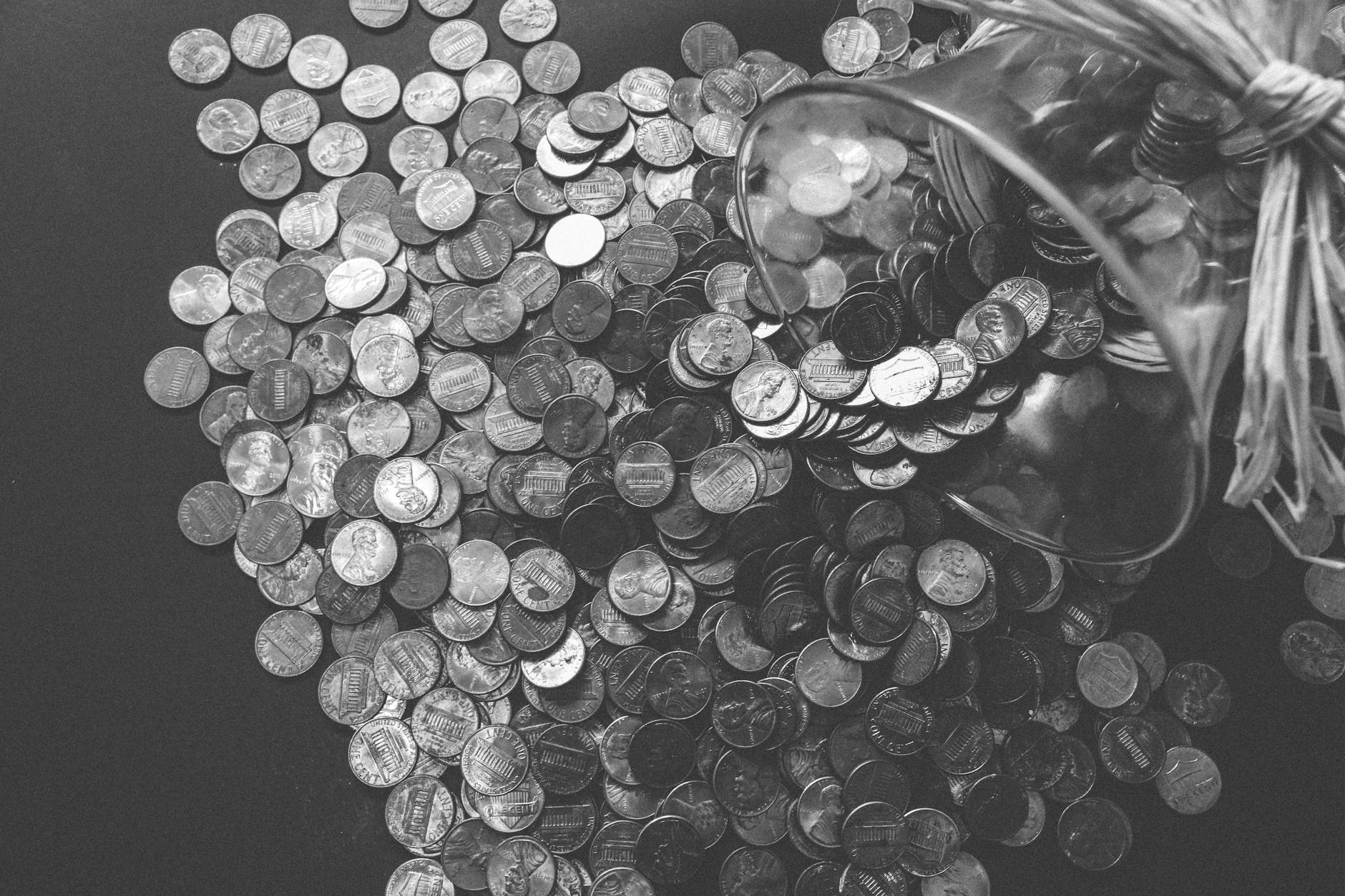When I made my first tiny contribution to my company’s 401(k) plan back in 2006, I had no idea I was taking the first step on a journey that would completely reshape my financial future. Those initial investments were like drops of water in an empty bucket—barely noticeable at first, but steadily accumulating over time. Now, a decade later, that bucket—along with my wife Tatiana’s equally full one—has grown large enough to put us on the cusp of financial independence.
My path from investing novice to aspiring early retiree hasn’t always been smooth. There have been missteps and moments of doubt, but each challenge taught me valuable lessons that transformed me into a smarter, more confident investor. As I reflect on this decade of growth, I want to share the 15 most important lessons I’ve learned—insights that might help you navigate your own investing journey with fewer detours than I took.
The Early Years: Stumbling Through the Basics (2006-2011)
When I first entered the investing world, I knew virtually nothing about the stock market. No one in my family had ever invested in stocks; my Latino parents built wealth through entrepreneurship, real estate, and farmland. The world of Wall Street seemed like a complex maze designed for financial insiders, not for regular people like me.
Despite my uncertainty, I began contributing just enough to my 401(k) to get the full 4% employer match. Even though the company wouldn’t start matching until after my first year, I jumped in immediately. Why the rush? I didn’t want to grow accustomed to seeing that extra money in my paycheck. I suspected it would be much harder to adjust to a lower take-home pay later if I delayed.
In retrospect, that 4% pre-tax contribution barely affected my paycheck. But this highlights a universal truth about personal finance: there’s always a convenient excuse not to save. That’s precisely why automating your savings is so crucial—it removes willpower from the equation.

The Importance of Savings Rate
If I could go back and tell my younger self just one thing about achieving financial independence, it would be this: your savings rate is everything. Unfortunately, most Americans never learn this lesson. In January 2025, the personal savings rate was 4.6 percent.
The consequences of this low savings rate are profound. At 5%, it would take a staggering 62 years to save enough to retire! That’s more than most people’s entire working lives. The math is inescapable—the more you save, the sooner you can achieve financial freedom. You can use this calculator to see exactly how your savings rate affects your path to retirement.
At a 25% savings rate, you could reach financial independence in:
Based on the 4% rule and assuming consistent returns
“It’s not your salary that makes you rich, it’s your spending habits.”
Charles A. Jaffe
Looking at my own early savings pattern, I was contributing 4% with a 4% company match, for a total savings rate of 8%. Better than the national average, but still woefully inadequate. At that rate, retirement would have taken me 39 years. There’s nothing inspiring about working until your mid-60s when better options exist.
At the time, I thought I was being financially responsible by capturing the full match. I even convinced myself I’d be content working a 9-5 job for four decades. Now I realize how limited my vision was. Financial independence wasn’t even on my radar.
Lifestyle Inflation and Misplaced Priorities
During those early years, I had the income to save much more, but saving wasn’t my priority. Like many young professionals experiencing their first real paycheck, I succumbed to lifestyle inflation—the natural tendency to increase spending as income rises. The new job fueled a cascade of upgrades: a nicer house, a new car, a massive TV, and endless home improvement projects. Before I knew it, my growing paycheck was fully consumed by material possessions—most of which added little to my long-term happiness.
“Invest in yourself. Your career is the engine of your wealth.”
Paul Clitheroe
While I try not to dwell on past financial mistakes, I sometimes wonder where I’d be now if those initial investing years had been as focused as my recent ones. I might already be retired, traveling the world, or pursuing passion projects! But this is my unique journey, and those early stumbles were necessary steps in my evolution. They brought me to where I am today—in an incredible position, living a life of gratitude with the love of my life by my side.

The Turning Point: Discovering FI and Supercharging Our Savings (2012-2016)
Everything changed when I stumbled across the concept of financial independence (FI). It was like someone had switched on a light in a dark room, illuminating possibilities I never knew existed. Suddenly, retirement wasn’t some distant milestone reserved for senior citizens. It transformed into an exciting, achievable goal we could potentially reach in our 30s or 40s—a goal that would give us the freedom to design our ideal lives without the constraints of mandatory work.
This revelation fundamentally shifted our relationship with money. With a clear and compelling target in sight, our financial decisions gained purpose. We methodically paid off all our debts and rapidly increased our 401(k) contributions until we were maxing them out annually. No more settling for the bare minimum and hoping for the best—we were now on a mission with unwavering focus.
The graph below shows our steady progress over the years. I started with just 1% of my current balance in 2006 and worked my way up to 100% by 2016. Notice how the curve steepens dramatically after 2012 when we discovered FI—that’s the power of focus and intention.

Becoming a FIRE Power Couple
Over these years, Tatiana and I have evolved into what I jokingly call a “FIRE power couple.” We’ve aligned our financial values, supported each other’s savings goals, and developed a robust asset allocation strategy together. Most importantly, we understand why we’re investing. Every investment in our portfolio serves a specific purpose in our overall plan, not just randomly chosen because someone recommended it.
“An investment in knowledge pays the best interest.”
Benjamin Franklin
What began as a necessary financial task has blossomed into something I genuinely enjoy. I find myself eagerly learning about concepts like optimizing investment returns, tax-efficient investing strategies, and market sector analysis. But this knowledge didn’t come without cost. I’ve made my share of investing mistakes along the way—not catastrophic ones, but significant enough to teach me valuable lessons that have shaped my approach today.

15 Crucial Investing Lessons from My First Decade in the Market
These hard-earned lessons form the foundation of our current investing strategy. Some came at a financial cost, while others resulted from countless hours of research and self-education. I’m sharing them in hopes they might help you avoid some of the same pitfalls I encountered.
1. Invest, Don’t Speculate
In my early days, I fundamentally misunderstood what investing actually meant. I thought it was about finding hot stock tips, making quick trades, and outsmarting the market. Stories of people doubling their money overnight captivated me, and naturally, I wanted similar results.
In late 2008, with markets in turmoil during the financial crisis, I opened a brokerage account thinking I could capitalize on the volatility. I started trading individual stocks based on headlines, coworker recommendations, and my own uninformed hunches. The result? I lost a couple thousand dollars in just a few months—a painful but necessary education.
This experience taught me the crucial distinction between investing and speculation. True investing means becoming a partial owner in great businesses, participating in their long-term growth, and collecting dividends along the way. It’s about patience and harnessing the power of compounding. Speculation, by contrast, is essentially gambling—trying to predict short-term price movements based on momentum, news cycles, or market sentiment.
Today, I approach the market as a business owner rather than a gambler. Before considering any investment, I ask myself: “Would I want to own this business for the next decade?” If the answer is no, I simply don’t buy. This mindset shift has completely transformed my results and eliminated the anxiety that came with trying to time the market.
2. A Stock is More Than a Ticker Symbol
“Price is what you pay. Value is what you get,” Warren Buffett famously said. When I first started investing, stocks were just abstract symbols and price charts on a screen. I’d buy something because the line was trending upward or because everyone at work was talking about it, without understanding what I actually owned.
Now I recognize that when you buy a stock, you’re buying a piece of a real company with employees, products, customers, competitors, and a balance sheet. Before considering an investment, I research the company thoroughly: What products or services do they sell? How do they generate revenue and profit? Who leads the company and what’s their track record? What competitive advantages protect their business? What risks could undermine their future success?
“Investing simply and in strong companies may not be the sexy way to invest nor will it produce the amazing returns that off stocks produce or that option income can produce. But, it will help you build a strong portfolio of companies that you know, understand, and know are capable of rewarding shareholders over the long run.”
Bert, Dividend Diplomats
Even though we primarily invest in index funds now (for reasons I’ll explain later), understanding what makes a good business helps me stay calm during market turbulence. When the market plunges, I’m not panicking about abstract numbers on a screen—I’m focused on the long-term health of the businesses I partially own, knowing that well-run companies typically weather economic storms and emerge stronger.
3. Use Appropriate Investment Vehicles
The 2008-2009 financial crisis taught me a painful lesson about matching investment vehicles with time horizons. I had money earmarked for a down payment invested in stocks, thinking I could grow it faster before needing it. When the market crashed, I faced an impossible choice: either postpone my housing plans or sell investments at the worst possible time. I ended up selling at a significant loss—a mistake I vowed never to repeat.
This experience led me to develop a simple framework: If I need the money within five years, it doesn’t go into stocks, period. For short-term goals (1-2 years), I use high-yield savings accounts or money market funds. For medium-term goals (2-5 years), I might use a conservative mix of bonds and CDs. Only money I won’t need for at least five years goes into the stock market where it can weather volatility and benefit from long-term growth.
This approach gives me peace of mind knowing that my short-term financial needs won’t be jeopardized by market fluctuations, while my long-term investments have sufficient time to recover from inevitable market downturns. It also prevents emotional decision-making during market corrections, since my immediate needs are already secured with appropriate vehicles.
4. Allocate Assets Properly
Asset allocation—how you divide your investments among stocks, bonds, cash, and other assets—is one of the most important determinants of your returns and the volatility you’ll experience. I learned this lesson through an expensive mistake.
In 2013, after several years of strong market gains following the financial crisis, I became convinced that another correction was imminent. Acting on this belief, I moved a large portion of my 401(k) to cash, planning to jump back in at lower prices. The problem? The market continued climbing for another year, and I missed out on significant gains while waiting on the sidelines.
This costly error prompted Tatiana and I to spend nearly a year researching different asset allocation models. We eventually settled on a strategy aligned with our risk tolerance and time horizon: 75% stocks (60% US, 15% international), 20% bonds, and 5% real estate investments. This allocation gives us growth potential while dampening volatility to a level we can emotionally tolerate.
The key insight was choosing an allocation we could stick with through market turbulence, not just one that looked good on paper. We rebalance annually to maintain these proportions, which automatically forces us to buy low and sell high without emotional decision-making. Having a written investment policy prevents us from making reactive changes based on market conditions or headlines.
5. Market Timing is a Fool’s Game
“Far more money has been lost by investors preparing for corrections, or trying to anticipate corrections, than has been lost in corrections themselves.” This Peter Lynch quote perfectly captures my failed attempt at market timing described above.
The fundamental problem with market timing is that you have to be right twice: when you sell and when you buy back in. Academic research consistently shows that even professional money managers can’t time the market successfully over the long run. For individual investors like us, the odds are even worse.
The True Cost of Market Timing
Why staying invested beats trying to time the market
If you had invested $10,000 in the S&P 500 on January 1, 1999, and stayed fully invested until December 31, 2018, your investment would have grown to $29,845. But if you had missed just the 10 best days during that period, your investment would only be worth $14,895—less than half as much!
$29,845
Final Value
Fully Invested for 20 Years
198% total return$14,895
Final Value
Missed Just 10 Best Days
49% total returnThe Timing Trap
Six of those 10 best days occurred within two weeks of the 10 worst days. This makes timing the market essentially impossible. Investors who panic and sell during downturns often miss the powerful rebounds that follow.
Based on S&P 500 performance from January 1, 1999 to December 31, 2018. Past performance is not indicative of future results.
“The stock market is filled with individuals who know the price of everything, but the value of nothing.”
Phillip Fisher
6. The Stock Market’s Long-Term Trend is Upward
When I experienced my first market crash in 2008-2009, it felt like the financial world was ending. The relentless stream of apocalyptic headlines had me questioning whether the market would ever recover. Every day brought news of another bank failure or company bankruptcy.
The Remarkable Consistency of the S&P 500
Decades of historical data reveal a powerful trend of long-term growth
Since 1926, approximately 3 out of 4 calendar years have delivered positive returns.
Over any 20-year period, the S&P 500 has never delivered a negative return when adjusted for inflation.
Positive Returns: A Historical Perspective
The S&P 500 has consistently rewarded patient investors. Here’s what the data tells us:
- 75% positive years – While not every year is a winner, the odds strongly favor investors who stay in the market.
- Average annual return of ~10% – Even including major downturns like the Great Depression, 2008 Financial Crisis, and COVID-19 crash.
- Consistent long-term growth – Despite periodic market corrections, the overall trajectory has been upward.
This data powerfully demonstrates why long-term investing works. Short-term volatility is inevitable, but the patient investor has historically been rewarded.
S&P 500: 20-Year Rolling Returns (Inflation-Adjusted)
| Period | Annualized Return | $10,000 Grows To |
|---|---|---|
| 1926-1945 | +4.3% | $23,190 |
| 1940-1959 | +8.9% | $54,700 |
| 1950-1969 | +8.4% | $50,350 |
| 1960-1979 | +3.2% | $18,770 |
| 1970-1989 | +5.7% | $30,200 |
| 1980-1999 | +10.6% | $75,230 |
| 1990-2009 | +5.9% | $31,450 |
| 2000-2019 | +4.1% | $22,260 |
| 2003-2022 | +6.8% | $37,450 |
Perfect Track Record
While returns varied across different 20-year periods, from as low as 3.2% to as high as 10.6% annually, every single 20-year period since 1926 has delivered positive inflation-adjusted returns. This remarkable consistency provides strong evidence that long-term investors can rely on the growth potential of the U.S. stock market.
Based on S&P 500 performance data from 1926-2023. Returns are inflation-adjusted using CPI data. Past performance is not indicative of future results.
This historical context gives me the confidence to stay invested during market downturns, when many investors panic and sell at precisely the wrong time. Rather than viewing market crashes as disasters, I now see them as temporary sales—opportunities to buy quality investments at discounted prices. This mindset shift transforms fear into excitement when markets decline, completely changing my investing psychology.
7. Pick a Specific Day to Invest
Emotion is the enemy of good investing decisions. In my early days, I would check the market daily, trying to determine if it was a “good day” to invest. Was the market up too much? Should I wait for a pullback? This constant deliberation led to analysis paralysis and missed opportunities.
The solution came from automation and routine. We now invest on payday, regardless of what the market is doing. Our 401(k) contributions are automatically deducted from our paychecks, and we’ve set up automatic transfers to our brokerage account on the same day each month. This system removes the temptation to time the market and ensures we’re consistently building our portfolio.
This disciplined approach offers two major benefits: it eliminates the stress of trying to pick the perfect moment to invest, and it naturally implements dollar-cost averaging—buying more shares when prices are low and fewer when prices are high. Over time, this methodical strategy produces better results than sporadic investing based on headlines or emotions.
8. Investment Fees Matter
When I started investing, I paid little attention to fees. A 1% management fee or a 0.75% expense ratio seemed insignificant—what’s one percent when markets might return 7-10% annually? This indifference to costs was a costly mistake.
Over time, I’ve come to understand that seemingly small fees can devastate your returns due to the power of compounding. Consider this eye-opening calculation: If you invest $100,000 with a 7% annual return over 30 years, you’ll end up with about $761,000 with a 0.1% fee, but only $574,000 with a 1% fee. That’s a difference of $187,000—nearly twice your original investment—just from a 0.9% difference in fees!
This realization transformed us into dedicated do-it-yourself investors focused on cost efficiency. We now exclusively use low-cost index funds, with our portfolio’s average expense ratio below 0.1%. Tools like Personal Capital help us track and minimize investment costs, ensuring more of our money stays working for us rather than enriching fund managers.
9. Have Multiple Income Sources
Relying solely on a stock portfolio for retirement income creates unnecessary vulnerability. Market downturns can force you to sell investments at depressed prices, permanently damaging your nest egg through what financial planners call “sequence of returns risk.”
“The real key (to wealth) is to have multiple flows of income that are indestructible due to economic conditions or technological developments.”
Grant Cardone
To build more resilience into our financial plan, we’ve diversified our income sources. In addition to our stock and bond portfolio, we own a rental property that generates monthly cash flow regardless of market conditions. We’re also developing skills that could provide consulting income during retirement if needed, giving us additional flexibility.
These multiple income streams will allow us to be more adaptable in retirement. During market downturns, we can lean more heavily on rental income or part-time work, giving our portfolio time to recover. This strategy significantly reduces sequence-of-returns risk—one of the biggest threats to early retirees. It’s like having multiple engines on an airplane; if one fails, the others can keep you airborne.
10. Use Tax Loss Harvesting
Tax-efficient investing is a powerful way to boost returns without taking on additional risk. One strategy I’ve implemented in recent years is tax loss harvesting—selling investments at a loss to offset capital gains and up to $3,000 of ordinary income per year.
This technique requires vigilance and understanding of tax rules. For example, last year when a portion of our international stock allocation declined temporarily, I sold those positions at a loss and immediately replaced them with similar (but not identical) funds. This maintained our market exposure while capturing about $7,000 in tax losses, which we used to offset gains from rebalancing elsewhere in our portfolio.
The rules can be complex—particularly the “wash sale” rule that prohibits buying a substantially identical security within 30 days before or after the sale. To manage this complexity, I maintain a spreadsheet tracking potential tax-loss harvesting opportunities throughout the year, especially during market corrections when they’re most abundant.
This strategy requires upfront education and ongoing attention, but it has saved us thousands in taxes that would otherwise have reduced our investment returns. In high-tax states, the combined federal and state tax savings can be substantial.
Tax Loss Harvesting: Turning Market Dips Into Tax Savings
How to strategically realize losses to reduce your tax bill without changing your investment strategy
Monitor your portfolio for investments that have declined in value below your purchase price. These present potential tax loss harvesting opportunities.
Sell the investment to realize the capital loss, which can offset capital gains or up to $3,000 of ordinary income per year.
Immediately replace with a similar but not identical investment to maintain your market exposure and asset allocation.
Use the realized losses to offset capital gains from other investments or up to $3,000 of ordinary income per year. Excess losses can be carried forward to future tax years.
The wash sale rule prohibits buying a “substantially identical” security 30 days before or after selling at a loss. Buy a similar but different fund (e.g., different tracking index) to maintain exposure.
- Reduces current year tax liability
- Maintains investment strategy and market exposure
- Especially valuable during market downturns
- Can offset up to $3,000 of ordinary income annually
- Excess losses carry forward to future tax years
11. Keep Learning
The investment landscape continuously evolves, with new products, strategies, and research emerging regularly. Stagnation is the enemy of successful investing, which is why ongoing education has been crucial to improving our results.
When I started this journey, I knew nothing about concepts like tax-loss harvesting, asset location strategies, or Roth conversion ladders. Each new concept I’ve learned has allowed me to optimize our approach further, potentially adding hundreds of thousands of dollars to our nest egg over time.
I dedicate about two hours each week to financial education—reading books, listening to podcasts, following respected financial blogs, and occasionally attending investment webinars. Tatiana jokes that I sometimes drive her crazy with new strategies, but she appreciates the results of this continuous learning process.
Recent areas I’ve been studying include optimizing withdrawal strategies for early retirement, understanding the nuances of international taxation (for potential geographic arbitrage in retirement), and exploring alternative investments like private real estate funds. The learning never stops, and each new insight refines our path to financial independence.
12. Keep an Eye on Asset Diversification and Net Worth Allocation
While most people focus solely on their investment portfolio’s allocation, I’ve learned to zoom out and consider our entire net worth. This broader perspective includes our home equity, rental property, emergency fund, and even the present value of future Social Security benefits.
Viewing our finances holistically helps ensure we’re not overexposed to any single asset class or risk factor. For instance, when our home value and rental property represented nearly 70% of our net worth, we deliberately focused on building our stock positions to create better balance. This prevented us from being too concentrated in real estate, which could be problematic if the housing market declined in our area.
We’re building a portfolio that needs to last at least 60 years in retirement, considering our relatively young age and (hopefully) long life expectancy. Having truly diverse assets allows us to be more flexible with withdrawals—selling from whichever asset class is performing best at the time, following the fundamental “buy low, sell high” principle.
I track our net worth allocation quarterly using a simple spreadsheet that categorizes each asset by type, tax treatment, and liquidity. This bird’s-eye view helps us make strategic decisions about where to direct new savings and which assets might need rebalancing to maintain our desired diversification.
13. Asset Location is as Critical as Asset Allocation
It’s not just what you own that matters, but where you own it. This principle of “asset location” can significantly impact your after-tax returns. I learned this lesson after realizing I was holding tax-inefficient investments like REITs and corporate bonds in our taxable accounts, while our tax-advantaged accounts held more tax-efficient index funds—exactly the opposite of the optimal arrangement.
Now we practice strategic asset location. We keep tax-inefficient investments that generate ordinary income (bonds, REITs) in tax-advantaged accounts like 401(k)s and IRAs, where that income can compound without annual tax drag. In our taxable accounts, we focus on tax-efficient investments like broad market index funds and municipal bonds.
Strategic Asset Location
Optimizing where you hold investments to maximize after-tax returns
- Corporate & Government Bonds
Generate interest taxed as ordinary income
High tax impact if held in taxable accounts - REITs
Distributions taxed as ordinary income
High tax impact if held in taxable accounts - Actively Managed Funds
High turnover creates taxable events
High tax impact if held in taxable accounts
- Index Funds (Total Market)
Low turnover, mostly qualified dividends
Low tax impact in taxable accounts - Municipal Bonds
Interest is typically exempt from federal taxes
Low to no tax impact in taxable accounts - Individual Stocks (Long-term)
Qualified dividends, control over capital gains
Lower tax rates in taxable accounts
- Save tens of thousands in taxes over your lifetime
- Increase after-tax returns without taking additional risk
- Maximize tax-deferred compounding in retirement accounts
- Take advantage of lower capital gains rates in taxable accounts
Strategic asset location can significantly improve after-tax returns without changing your overall asset allocation or risk level.
We’ve also developed a specific order of operations for contributions: first max out all tax-advantaged accounts, then contribute to taxable accounts. For withdrawals in retirement, we’ll use taxable accounts first (taking advantage of lower capital gains rates), followed by traditional accounts, and Roth accounts last.
This strategic approach to asset location could save us tens of thousands in taxes over our lifetime—money that stays in our portfolio working for us rather than going to the IRS. It’s a sophisticated optimization that doesn’t increase investment risk but can significantly improve after-tax returns.
14. The Party is Over When Dumb Money Follows Smart Money
“Be fearful when others are greedy, and greedy when others are fearful,” Warren Buffett famously advised. This contrarian wisdom has proven valuable throughout various market cycles I’ve witnessed.
I’ve observed several instances of this phenomenon: in 2006 when everyone from my barber to my grocery clerk was flipping houses; in 2017 when cryptocurrency dominated holiday dinner conversations; and in various sector bubbles since then. The pattern is remarkably consistent.
When investments become the subject of everyday conversation and everyone seems to be getting rich without effort, it’s often a warning sign of excessive optimism. The professionals and insiders (smart money) have usually been in these investments early and are beginning to exit as retail investors (dumb money) pile in near the peak, driven by FOMO (fear of missing out).
This doesn’t mean I completely avoid popular investments, but I maintain healthy skepticism and ensure they represent only a small portion of our overall allocation. I’ve found success by asking a simple question: “Who is selling this investment to me, and why are they willing to part with it if it’s such a sure thing?” This perspective helps me avoid getting caught in speculative bubbles that inevitably burst.
15. Practice the KISS Method (Keep It Simple, Stupid)
Early in my investing journey, I was drawn to complexity. I maintained elaborate spreadsheets tracking dozens of metrics, experimented with momentum strategies, and held a portfolio with over 20 different funds across various accounts. I thought sophistication equaled superiority and that complex strategies would yield better results.
Experience has taught me the opposite is true. Our current portfolio contains just five core funds, achieving broad diversification without unnecessary complexity. Our investment policy is written in plain language on a single page, making it easy to follow even during market turbulence when emotions run high.
We’ve found that simpler strategies are easier to maintain, less prone to behavioral mistakes, and often outperform more complex approaches due to lower costs and tax efficiency. As Leonardo da Vinci supposedly said, “Simplicity is the ultimate sophistication.”
This doesn’t mean being simplistic—we still do thorough research and maintain awareness of advanced concepts. But we implement only those strategies that offer substantial benefits relative to their complexity. I prefer to invest to live rather than live to invest, and simplicity gives us more time to focus on what truly matters in life beyond financial markets.

Final Thoughts
Reflecting on a Decade of Growth
Looking back, I can sum up my first decade of investing as a tale of two halves: slacking in the first and getting my act together in the second. It reminds me of that college student who coasts through the first two years, then buckles down as a junior to boost their GPA above 3.0 before graduation. Despite the learning curve and early missteps, we managed to achieve an overall return of more than 8% during this period—a testament to the power of persistence and continuous learning.
“People value and spend their money more wisely when they acquire it by their own efforts—also known as work.”
Larry Elder
From Skeptic to Enthusiast
My relationship with investing has undergone a complete transformation. When I started this journey, I was deeply skeptical about the stock market. Growing up in a Latino family, our concept of wealth building centered around entrepreneurship and tangible assets like real estate. The stock market seemed like a mysterious, risky world reserved for financial elites with insider information.
But as I educated myself and watched our nest egg grow steadily (despite market fluctuations), my perspective shifted dramatically. I went from viewing investing as a necessary evil to genuinely enjoying the process. Now, I find myself eagerly reading financial reports, analyzing market trends, and fine-tuning our investment strategy. It’s become a hobby that not only engages my mind but also secures our future freedom.
This evolution from intimidation to confidence illustrates how financial literacy can transform anyone’s relationship with money. You don’t need special talents or insider connections to be a successful investor—just patience, discipline, and willingness to learn from mistakes.
The Impact of Partnership
I can’t overstate how crucial it’s been to have Tatiana as my partner in this journey. Financial disagreements destroy many relationships, but we’ve turned money management into a bonding experience. We’ve aligned our financial goals, supported each other through the learning process, and celebrated each milestone together.
Our journey to financial independence has strengthened our relationship in unexpected ways. It’s given us a shared purpose and countless opportunities to dream about our future together. We’ve had deeply meaningful conversations about what truly brings us joy, what we value most in life, and how we want to spend our limited time on this planet. These conversations have brought us closer than any material purchase ever could.
Having a partner who shares your financial values creates powerful synergy. When one of us feels tempted by unnecessary spending, the other provides gentle accountability. When markets tumble and fear creeps in, we remind each other of our long-term plan. Two people working toward the same goal can achieve so much more than either could alone.

Looking Ahead: Our Second Decade of Investing
As we enter our second decade of investing, I’m filled with excitement and optimism. We’re no longer fumbling in the dark but moving forward with confidence and purpose. The foundation we’ve built gives us a launching pad for the next phase of our journey.
Here’s what I’m particularly looking forward to exploring in the coming years:
- Exploring New Frontiers: We’ll continue learning about different investment vehicles and strategies. I’m particularly interested in delving deeper into real estate investment trusts (REITs) and international markets, especially emerging economies with long-term growth potential. As our knowledge expands, we can make increasingly sophisticated decisions while maintaining our core principle of simplicity.
- Shifting to Tangible Assets: As our stock portfolio grows, we plan to gradually diversify into more tangible assets. This might include purchasing additional rental properties or investing in land. These assets provide not only diversification but also potential inflation protection and additional income streams. Finding the right balance between paper and tangible assets will be a key focus.
- Fine-tuning Our FI Strategy: With retirement potentially just a few years away, we’ll be optimizing our withdrawal strategies and ensuring our portfolio can sustain us for decades to come. This includes establishing the right cash buffer, setting up tax-efficient withdrawal sequences, and possibly implementing a Roth conversion ladder during our early retirement years to minimize lifetime tax burden.
- Giving Back: As we approach our FI goals, we’re increasingly drawn to using our financial knowledge to help others. Whether through mentoring, volunteering for financial literacy programs, or simply sharing our experiences on this blog, we want to pay it forward. Financial education changed our lives, and we want to help others experience that same transformation.
The True Value of Our Journey
When you work hard to achieve financial stability, you value the freedom it provides far more than if money were simply given to you. This journey has taught us discipline, patience, and the power of delayed gratification. It’s fundamentally changed how we view money, success, and what truly matters in life.
The most valuable lesson wasn’t about maximizing returns or minimizing taxes (though those are important!). It was realizing that true wealth isn’t just about the numbers in our accounts. It’s about having the freedom to choose how we spend our time and energy. It’s about building a life rich in experiences, relationships, and purpose—things that money can facilitate but can’t directly buy.
As we continue on this path, we’re not just investing in stocks and bonds. We’re investing in our future selves—in the life we want to live and the impact we want to have on the world. Financial independence isn’t the end goal; it’s the beginning of a new chapter where we can contribute value on our own terms, unconstrained by financial necessity.
From One Investor to Another: Let’s Exchange Ideas
If you’re just starting your investing journey, know that everyone begins as a novice. Don’t be discouraged by early mistakes or slow progress. Each step forward, no matter how small, brings you closer to your goals. The most important step is simply to begin.
If you’re further along in your journey, I encourage you to reflect on your own lessons learned. What strategies have worked for you? What mistakes have taught you the most? Sharing our experiences not only helps others but also reinforces our own learning.
I’d love to hear about your investing journey. What lessons have you learned over the years? What are your goals for the future? Share your thoughts in the comments below. Let’s learn from each other and grow together on this path to financial independence!
Risk disclosure: all investments involve some level of risk, including the possibility of losing principal. The information on this website is provided for discussion purposes only and should not be construed as financial advice.






It’s really motivating to read personal experiences such as this. Thanks for sharing all those tips.
You’re welcome! I’m glad you find it helpful.
Thanks for sharing your lessons here. The lessons resonate very well with me and it is all stuff I have thought and considered over the years too. Being in the online community, I have watched others change their investment styles and try to one-up the market, aka find the next best way to beat the market. Investing simply and in strong companies may not be the sexy way to invest nor will it produce the amazing returns that one off stocks produce or that option income can produce. But, it will help you build a strong portfolio of companies that you know, understand, and know are capable of rewarding shareholders over the long run.
Thanks for taking the time to share your experiences, again. Lots of good stuff in here!
Bert, One of the Dividend Diplomats
Hi Bert –
This is such a great statement about investing in great quality companies that I made it part of the article. Thanks for sharing your knowledge.
I can say from experience that it is much harder to increase pension contributions, than it is to start on a certain amount. I started a job with a scheme that I could contribute 4% and my employer would match it. Then (and contrary to every other employer), they launched a new scheme that was way better, but you had to contribute 8%. It was a no brainer, and it wasn’t quite losing a further 4% once tax and national insurance was factored in, but it was still a big adjustment to make.
Hi Sarah –
I agree, it’s a lot harder to meet the match when companies have schemes that offer a match but require a contribution higher than 4%. What I would do in that case if I can’t meet the full match right away, is increase the contribution on an annual basis by certain percentage until meeting the full match or maximum contribution. But of course, the FI crowd that wants to reach FIRE sooner rather than later would want to sacrifice a little more to max out ASAP. Thanks for stopping by!
I like your point about picking a day to invest. Despite the fact that I totally agree with you that timing the market is next to impossible, I spent some fruitless time researching “What is the best day of the month to invest?” There really is no consensus out there. So starting now I’m going to have to set up an automatic transfer. I’ve always just invested ad hoc each month.
Hi CoupleofCents –
The only “market-timing”, if you will, that we sort of do is to rebalance with the new investment cash to keep our intended asset allocation. This minimizes the risk of being under/overweight in some assets.
Picking a specific day it’s a great strategy that takes away the guessing of whether we should jump in or not. On “investment day”, which falls on the same day as payday, we look at the bills that are due before the next paycheck, set that money aside and invest the rest. Rinse, repeat.
Thanks for stopping by.
This sums up my whole FI/RE investment strategy. Keep it simple and invest on regular intervals until you have enough. Easy right! 😛
Hi Xyz,
Absolutely, it’s the simple path to wealth! 🙂
Great story! I went through many of the same phases on my journey to FI. Early on I was not maxing out my 401k, and actively trading stocks. After spending too much time trying to beat the market, I finally learned it’s easier and more effective to just make regular investments in index funds. Then down the road, I got a better with optimizing taxes and investment fees. Wish I would have learned sooner, but mistakes are a big part of learning, and I am sure I still have more to learn 🙂
Hi Mr. CK,
It’s good to understand how important it is to be able to optimize taxes early on. Maxing out the 401(k) is our most effective way to lower our tax bill.
We all have a lot more to learn and I’m sure more mistakes will be made! So I’m glad that we have this medium to learn from each other. Hopefully the mistakes will be small in nature as we find ways to mitigate risk. Thanks for dropping by.
Tnx for helping others! My personal decision to leave wall street and their manipulations to move into physical assets that pay passive income, real estate, rentals. The comment that real estate is not for everyone does not take into account that everyone is capable of learning and excelling. I did most folks can too.
5 yrs ago my wife retired from teaching so we moved her 30 yrs of hard saving a meager $203k of 403b savings into a Self Directed IRA, with check book control and started buying rentals in good school districts of Atlanta. With rent re-investment the fund went geometric (hocky stick) in valuation. Just 5 yrs later it can be liquidated for $900k and today throws off $7k of rent / month. Easily enough to live off. The math on this gain should be impressive.
I’m certain I did not have the skill and temperament to replicate this in the stock market. I seriously doubt anyone could do the same in the stock market. It is true we bought at the low of real estate, but historically it still is great time to buy. Typical real estate cycles are 15 yrs up, 6 yrs down. The hedgfunds jumping in and buying shortened the 6 yrs to 4 yrs. With the en mas conversion of past buyers into future renters and worsening ave income stats I don’t see anything but great predictions for buying rentals. As long as close to growing jobs and good schools. Best of luck.
Hi Curt,
I agree that most folks are capable of learning real estate investment. We have a rental property that provides a 10% ROI but and it’s much less risky than the stock market. However I bought the property a while back and didn’t make the best of it due to its location. I learned some lessons since then which is making me think about doing a part two of this post to include real estate investments.
That sure is an impressive gain. You more than quadrupled your initial investment in 5 years! Congratulations! I’m interested in learning more about Self Directed IRAs. I think that it is a great option to pursue so that you can have total control of your investments. We’re keeping our options open and are willing to look into those options at some point.
I’m not familiar with the RE cycle so this is great info. As long as you make money when you buy and yes, have a criteria such as a growing job market and good school district, you certainly can’t go wrong with RE investing. Awesome comment! Thanks for dropping by.
An excellent read, and your timeline mirrors mine in that the vast majority of my investing has occurred over the last ten years and I’ve learned a lot in the process. I also started with target date funds and actively managed funds-of-funds, but have “graduated” to owning nothing but simple passive index funds.
Keep up the good work, and I hope Mr. Market is kind to you over your remaining months to the ultimate goal.
Cheers!
-PoF
Hi PoF-
I also noticed that our investing styles do have a lot of similarities, after reading your asset allocation post. It’s good to be in great company!
I’m not sure what to expect from Mr. Market (and never will be) but it will all depend on how we define kindness. Maybe he’ll give us a gift of a 20% drop so that we can buy more before we conclude our accumulating stage? As much as we don’t like to see our net worth drop, a correction might be the best thing to come our way now.
I’m glad you liked the article and thank you for commenting!